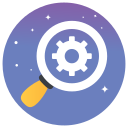Introduction to Open Source Software for Beginners
Open source software has transformed the way individuals and organizations approach technology solutions. For beginners, understanding what open source software is, why it matters, and how to engage with it can unlock an incredible world of collaboration, creativity, and learning. This guide introduces the core principles, benefits, and best practices for getting started with open source software, offering a clear path to becoming an active participant in a global community. Whether you’re curious about the basics or considering contributing to your first project, this resource will help you navigate the exciting landscape of open source.
What is Open Source Software?
Open source software is defined by its distribution under licenses that promote free access to source code. The origins of open source trace back to the early Unix and academic community collaborations, but the concept became widely recognized in the late 1990s with the creation of the Open Source Initiative. The term itself was coined to emphasize the practical and business benefits—as opposed to just the philosophical aspects—of freely shared code. Today, open source software is the backbone of much of the technology infrastructure, from servers to applications and even mobile devices.

Previous slide
Next slide


Perhaps the most notable category of open source software is operating systems, with Linux as the most prominent example. Variants like Ubuntu, Fedora, and Debian offer powerful alternatives to proprietary operating systems while encouraging hands-on learning about how computer systems operate. For beginners, exploring an open source operating system can demystify fundamental concepts such as file systems, networking, and system administration, providing an excellent foundation for further technical exploration.

Open source has revolutionized software development by providing a plethora of free tools and editors, such as VS Code, Atom, and Eclipse. These tools are widely used by developers of all skill levels, and their open nature means they are continually evolving based on user feedback. Beginners can benefit from these tools’ rich features, extensive documentation, and supportive user communities. Whether writing code for the first time or seeking to automate workflows, open source development environments are essential resources for learning modern programming skills.

Open source productivity software includes office suites like LibreOffice, graphics editors like GIMP, and web browsers like Mozilla Firefox. These applications serve as free alternatives to proprietary offerings and are often customizable to individual needs. Beginners gain from access to powerful software without financial barriers, allowing them to experiment, create, and organize their work efficiently. As users become more comfortable, they can explore ways to contribute to these projects, further deepening their engagement with open source communities.

How to Find and Choose Open Source Software
The most widely used repositories for open source software include platforms like GitHub, GitLab, and SourceForge. Many major projects also have their own official websites, which host downloads, documentation, and community forums. Beginners should start by searching these repositories for projects relevant to their needs and exploring recommendations from established users or technology publications. Picking projects with active development and vibrant communities increases the likelihood of finding secure and well-maintained software.
Getting Started: Installing and Using Open Source Software
Quality documentation is the backbone of most successful open source projects. New users should prioritize software with comprehensive guides—covering installation, configuration, and troubleshooting—often found on official project websites or community-run wikis. Tutorials, video guides, and community Q&A platforms like Stack Overflow can further clarify challenging concepts. By investing time in reading documentation and working through tutorials, beginners can quickly build confidence in using unfamiliar tools, making the learning curve much less intimidating.

Understanding Contribution Guidelines
Most open source projects publish clear contribution guidelines that detail how to participate—whether by submitting code, reporting bugs, or improving documentation. These guidelines explain the coding standards, review processes, and communication protocols that maintain project quality and cohesion. It’s important for beginners to read and follow these instructions carefully, as doing so will help ensure that their contributions are welcomed and valued. Respecting the established norms of a project makes collaboration smoother and more productive.

Finding Beginner-Friendly Projects
Some open source projects actively seek contributions from newcomers and tag certain issues as “good first issue” or “beginner friendly.” These tags indicate tasks with clear objectives and minimal prerequisites. Beginners can look for these labels on platforms like GitHub to identify approachable starting points. Choosing to work on beginner-friendly tasks provides confidence-building experiences and helps establish relationships within project communities, forming a foundation for deeper involvement in the future.

The Value of Non-Code Contributions
While many associate open source contributions with programming, there are numerous ways to participate without writing code. Beginners can contribute by translating documentation, creating tutorials, testing software for bugs, or providing user feedback. These roles are crucial to a project’s success and are often in high demand. Engaging in non-code contributions helps new participants build familiarity with project workflows and gain the experience needed to branch into more technical areas if they choose.
Previous
Next
Building Skills Through Open Source Participation
The hands-on nature of open source involvement allows beginners to learn practical skills that go beyond theory. Contributing code, troubleshooting errors, or improving documentation exposes you to real-world tools, collaborative workflows, and development best practices. These experiences provide valuable feedback loops, reinforcing learning and encouraging experimentation. As a result, learning becomes faster, deeper, and more relevant compared to structured classroom settings.
Challenges and Solutions in Open Source for Beginners
Navigating Complex Codebases
Many open source projects are large and complex, making initial exploration intimidating for beginners. It can be difficult to know where to start or how different components fit together. The solution is to begin small—read documentation, tackle minor bugs, or improve user-facing features. By gradually building understanding and confidence, newcomers can progress from simple tasks to more involved contributions. Many communities also provide mentorship or onboarding resources to support new participants in their learning journey.
Overcoming Imposter Syndrome
It’s common for beginners to feel unqualified or intimidated when joining established open source communities, especially when surrounded by experienced contributors. This imposter syndrome can discourage active participation. Recognizing that everyone starts as a beginner, seeking supportive communities, and celebrating even small successes can help overcome these feelings. Many projects are actively working to create inclusive environments where new voices are encouraged, making open source a more welcoming space for learners of all backgrounds.
Dealing with Technical and Social Challenges
Technical setbacks—like confusing errors or unfamiliar tools—are a natural part of learning in open source, as are occasional misunderstandings in community interactions. Beginners should not be discouraged by these challenges. Instead, patience, persistence, and a willingness to ask for help are vital. Respectful communication, clear documentation, and community codes of conduct all play roles in resolving both technical and social hurdles. Over time, addressing these obstacles successfully builds resilience and competence, further enriching the open source experience.
